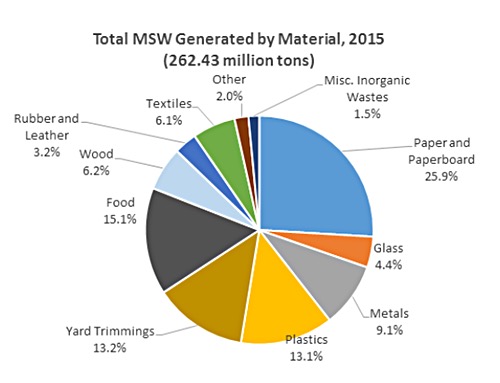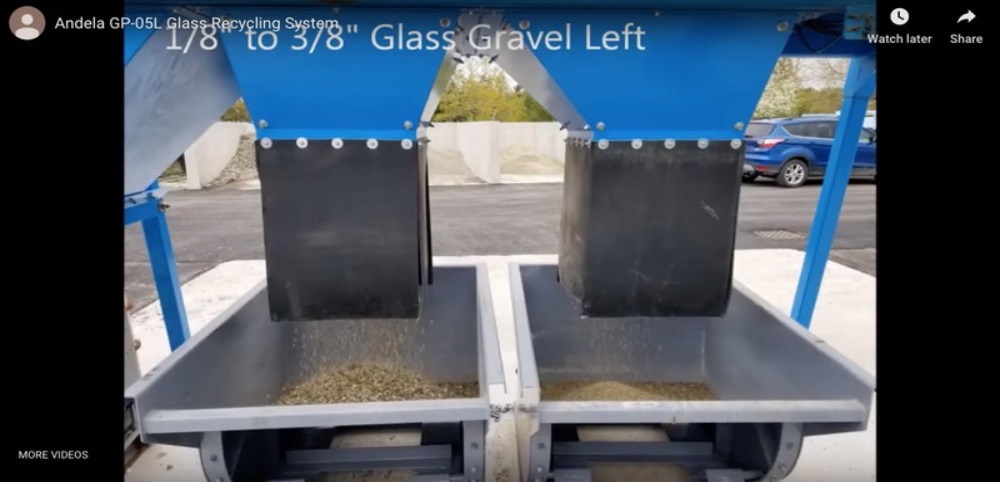Pagosa residents who make an attempt to recycle no doubt felt some disappointment — as my family did — when Archuleta County stopped accepting glass for recycling last year. For some of us who had been recycling glass, the impetus may have been a simple matter of doing the right thing for the planet — cutting down on the amount of trash we bury, and providing a renewable resource to the glass industry.
Maybe we were making a difference?
For the Archuleta County Solid Waste Department, however, the difference may have been mainly financial. Glass bottles take up room in a landfill… and sooner we fill up the landfill site on Trujillo Road, the sooner the County will need to find a new landfill site, and develop it. Developing a new landfill, in the 21st century, is not a simple proposition. We’re talking pages and pages of new Colorado regulations… and millions of dollars that the County doesn’t currently have.
But for a mix of reasons, the County dumped 40 tons of stockpiled glass into the landfill late last year, and has since stockpiled another 60 tons. 60 tons, all piled up with nowhere to go.
This problem was discussed on July 23 at the joint Town Council-Board of County Commissioners work session, beginning with a proposal from County Commissioner Ronnie Maez:
“As we all know, glass has been a big bane in our existence, as far as the landfill is concerned, because it takes up a lot of space. There’s no value to glass, on the market, to create… you know… a recycling thing of it. What we need to do is see what we can do, to address our needs or the Town’s needs or maybe the needs in other communities.”
The commissioner handed out some copy-printed information to the officials around the table.
“So I looked into it, and found a GP-05L system. What it does is: it’ll take the glass and turn it back into aggregate — from 3/8″ and clear down to sand. And either the Town and the County can both utilize this aggregate for our roads, sandbags, whatever we need to do with it. It doesn’t show this as a revenue-driving source for us, but what it means is, we’ll be keeping a lot of this glass out of our landfill. And the cost of the machine is roughly $111,000.”
Here’s a video of the machine Commissioner Maez was talking about, complete with a New Age music soundtrack:
Commissioner Maez: “We do have a place where we can store [the machine] over at the landfill. Comparing $111,000 to the cost of constructing a new landfill, we’ll be saving money in the long run, by buying space that we’re not filling up. By turning the glass back into aggregate, we’re showing good responsibility to our people, and I think it’s a really good idea that we need to discuss, and move froward with possible joint financial participation… because it benefits all of us…”
The GP-05L specs suggest that it can process 1-2 tons of glass per hour. If the County has collected 60 tons in the past 6 months, that’s about 10 tons a month, or maybe 120 tons per year. The Town Council members sitting around the table listened to Commissioner Maez’ idea and offered a few comments. One suggestion was to look at a range of glass-crushing devices, even if they might be more expensive than the GP-05L.
Turning glass into “aggregate” is not a new discussion among our elected leaders. The idea was pushed regularly by former Commissioner Michael Whiting, when he was serving on the Southwest Colorado Council of Governments. But we should put the idea of “aggregate” into some perspective. Most people in Archuleta County are familiar with “aggregate” as something rather important to the maintenance of gravel roads.
But there’s aggregate, and then there’s aggregate.
If you watched the video above, you noticed that the Andela GP-05L sorts out the paper labels and plastic bottle caps and other miscellaneous materials into a separate bin, which would not be suitable for recycling of any kind. (We don’t know, at this point, how many tons of plain old trash — labels, caps — would come from 120 tons of ‘glass’ each year.)

But a more important consideration might be the size of the glass “aggregate” created.
The Andela video shows the glass aggregate going into two separate bins. The bin on the left contains 1/8″ – 3/8″ Glass Gravel… The bin on the right contains 1/8″ Minus ‘Glass Sand’…

When I spoke with the Archuleta County Road & Bridge Department last week, I wondered how many tons of gravel we would use when repairing a worn-out gravel road, and I was told that, typically, we need about 3,500 tons of gravel to treat a mile of road. We pay $11 a ton for normal gravel, so a mile of road requires about $38,500 worth of gravel, with an 11 percent clay content.
If the County were to annually grind up 120 tons of glass into “aggregate” we would theoretically be producing about $1,300 worth of “aggregate” each year. Theoretically, that’s enough aggregate to cover about 80 feet of gravel road — per year. (The County maintains about 300 miles of roadway.) Except that County Road & Bridge uses 3/4″ aggregate.
1/8″ – 3/8″ aggregate, plus a lot of sand, might be essentially worthless for road repairs.
Assuming that the $111,000 Andela GP-05L proposed by Commissioner Maez wouldn’t be producing anything that Road & Bridge could actually use… but that we could find someone who could make use of 1/8″ – 3/8″ aggregate, and would pay us $1,300 for it annually…
We would earn back our investment in the GP-05L in a mere 85 years.
But there’s another piece to the puzzle, because we would be able to keep the glass out of the landfill. Wouldn’t that be valuable?
According the the EPA, cardboard, food waste, yard trimmings, and plastics make up the lion’s share of our Municipal Solid Waste (MSW). Like, about 70% of the trash stream:

Glass? A little more than 4% of the MSW total.
To put that in perspective… if the Archuleta County Landfill currently has a expected lifespan of 15 more years, removing all glass from the total stream of trash, and finding someplace else to put it, might allow the landfill to last an additional 8 months… if we assumed that nothing was being recycled.
So perhaps that’s the real question. Is anything being recycled… in 2019?

